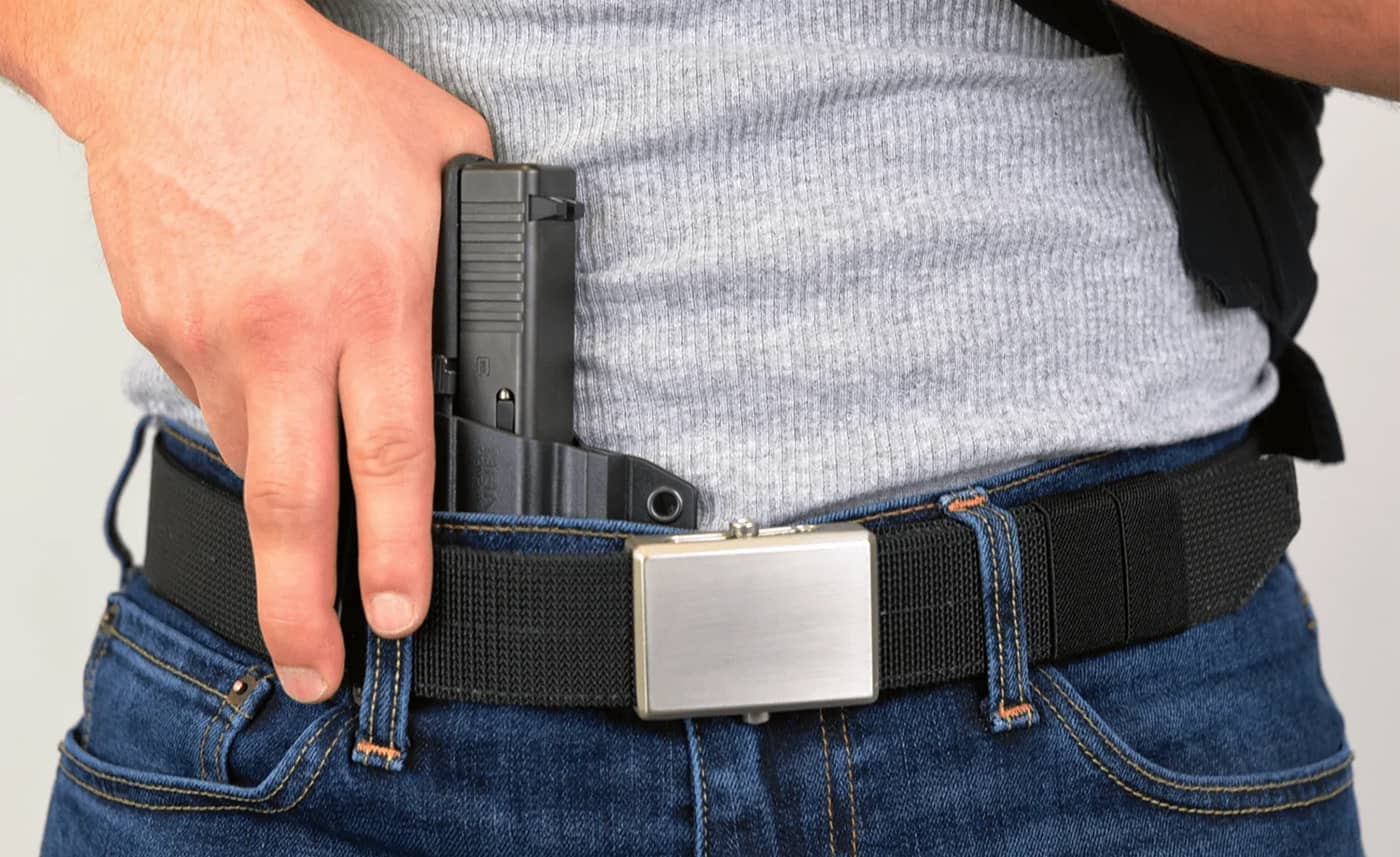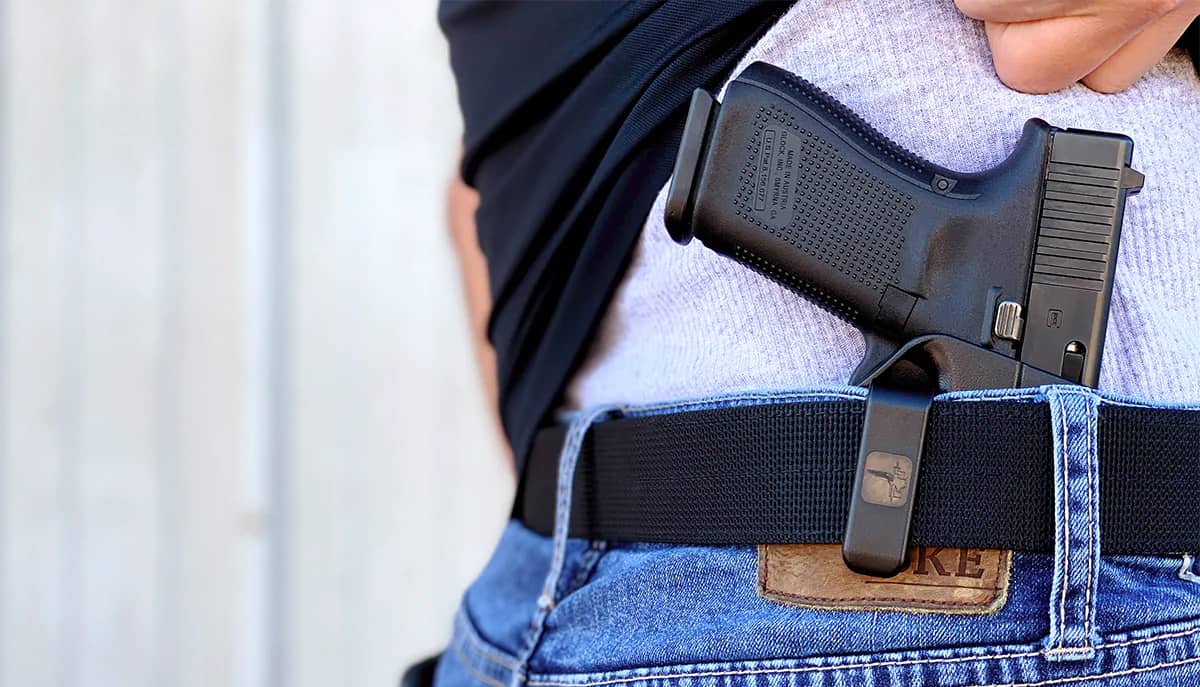Your concealed carry setup isn't something you should take lightly. In a life-or-death situation, it can be your last lifeline and help you safeguard your life, loved ones, and liberty. Moreover, in the hands of the untrained, firearms can be extremely dangerous. Therefore, carrying a concealed weapon comes with a lot of responsibility.
To be effective and safe as a CCW holder, you need to be willing to learn and adapt. So, in this post, we will tell you some of the most important tips that every person carrying a concealed weapon should live by.

What Are the Main Elements of An Effective CCW Setup?
Before we move on to the tips, it is important to understand what makes a CCW setup effective. Despite what many novice shooters think, a concealed carry setup consists of much more than a handgun. Here is a list of all the elements that make for an effective CCW setup:
- The Handgun
- The Ammunition
- The Holster
- The Belt
- Training
Choose the Right Handgun
The first step in developing the best CCW setup is choosing the right handgun. There are several factors that need to be considered before you can deem a handgun worthy of concealed carry. These factors are mentioned below in order.
Reliability
First and foremost, a concealed carry gun needs to be reliable. Every time you pull the trigger, your gun should shoot and complete its cycle without any malfunctions. In a defensive situation, a malfunction could mean death.
Most handguns these days that are made by reputable brands are quite reliable. However, ensure you regularly maintain your CCW handgun and use high-quality ammunition.
Firepower and Concealability
You need a gun that is concealable yet has enough firepower. The good news is that there are loads of options available on the market.
You can choose from a wide range of compact and subcompact pistols chambered in various calibers. However, keep in mind that the larger the caliber, the lower the capacity. Though small calibers may give you more capacity, they may need more firepower to neutralize a threat.
I believe that 9mm offers the best capacity, size, and availability ratio. With new micro 9 pistols like the Sig P365 and Springfield Hellcat, you can carry a decent amount of firepower in a very small and concealable package.
Controllability
Next up, your concealed carry pistol needs to be controllable. Most concealed carry pistols have small frames, making it difficult for people with large hands to control them.
In all honesty, this is something you will have to compromise on because longer grips can make a pistol more difficult to conceal. Still, most CCW pistols come with extended magazines and grip extensions that can give you a little more real estate to get a better grip.
Practical Accuracy
Lastly, make sure that your pistol is practically accurate. Now, it doesn't have to be super accurate at 30 or 40 yards, but within the 10 to 15-yard range, where most self-defense encounters will happen, it should be extremely accurate. Luckily, most common pistols these days offer decent accuracy.

Use the Right Ammunition
Once you have chosen the pistol and its caliber, you also need to pick the right kind of ammunition. Firstly, use something other than steel cases or other cheap ammunition, which can bring reliability issues.
Secondly, choose an ammunition type with more stopping than penetrating power. For instance, full metal jacket bullets are better for penetration; however, hollow points and fragmenting bullets do a lot more damage and give you a shorter “time to neutralize”. Moreover, bullet weights and powder type can also affect performance.
Any reliable ammunition would get the job done, but the bullets designed explicitly for self-defense tend to perform better.
Get A Reliable Holster
Next up, it's time to choose a holster. This is an essential part of your CCW setup, and there are several things to consider.
Firstly, you can choose an IWB (Inside the Waistband) or OWB (Outside the Waistband) holster. IWB holsters are better for concealability with all kinds of clothing. However, OWB holsters can work too, if you wear a jacket or coat.
You can also choose a pocket holster, leg band holster, or ankle holster. These holsters are suitable for small pocket pistols, and they are very versatile and concealable. However, they don't allow for the quickest draws and aren't the most secure options. They can be helpful for women who want to carry a weapon while wearing a dress.
Secondly, ensure that the holster allows you to draw the pistol quickly and reliably every time. It should have enough retention to keep your pistol in place and solid clips, so it doesn't move around on your belt. It should be comfortable and allow for quickdraws. Modern Kydex holsters are effective in this regard.

Find a Rigid and Durable CCW Belt
The CCW belt is one of the most neglected elements of a CCW setup. You should know that you can't carry your pistol on a regular belt. Regular belts tend to sag under the pistol's weight, making it difficult to draw the pistol and causing a lot of discomforts.
CCW belts are usually thicker, or they are made with rigid cores. These belts can hold more weight and are available in various styles and designs. Leather CCW belts are great since they can go with any outfit. However, you can also go for more tactical Nylon CCW belts.
CCW belts also need to be adjustable to get the perfect retention. Therefore, most dedicated CCW belts use a ratchet locking system instead of a traditional belt buckle, which allows them to be adjusted in tiny increments.
Train Regularly
Lastly, remember that even the best CCW setup will only be effective in the field if you have trained with it. So, get ready to put in the hours. Take your pistol to the range to practice quick draws and marksmanship. You can also practice your drawing at home with an empty gun.
Overall, please familiarize yourself with your CCW setup to the point that using it becomes muscle memory.